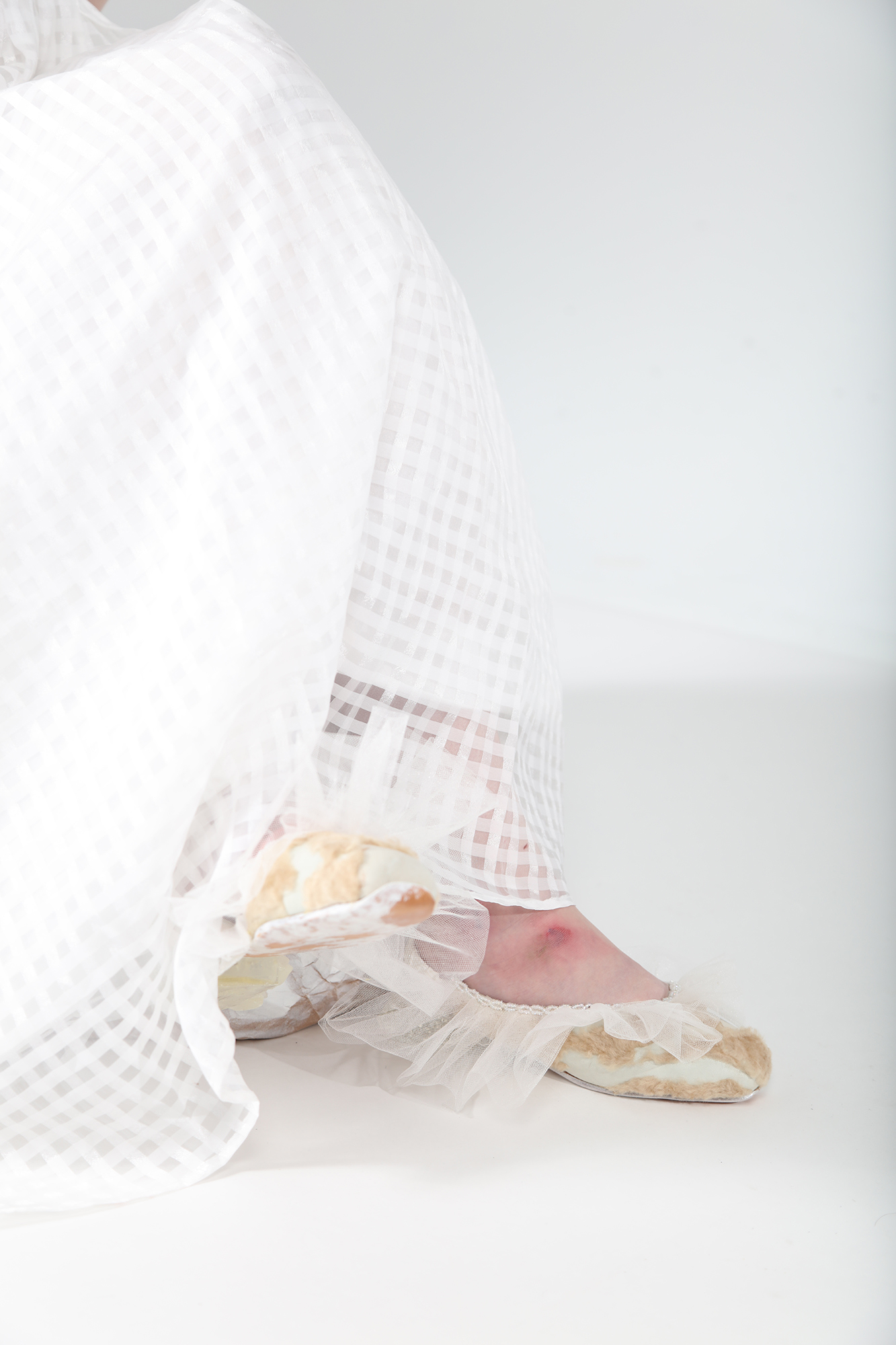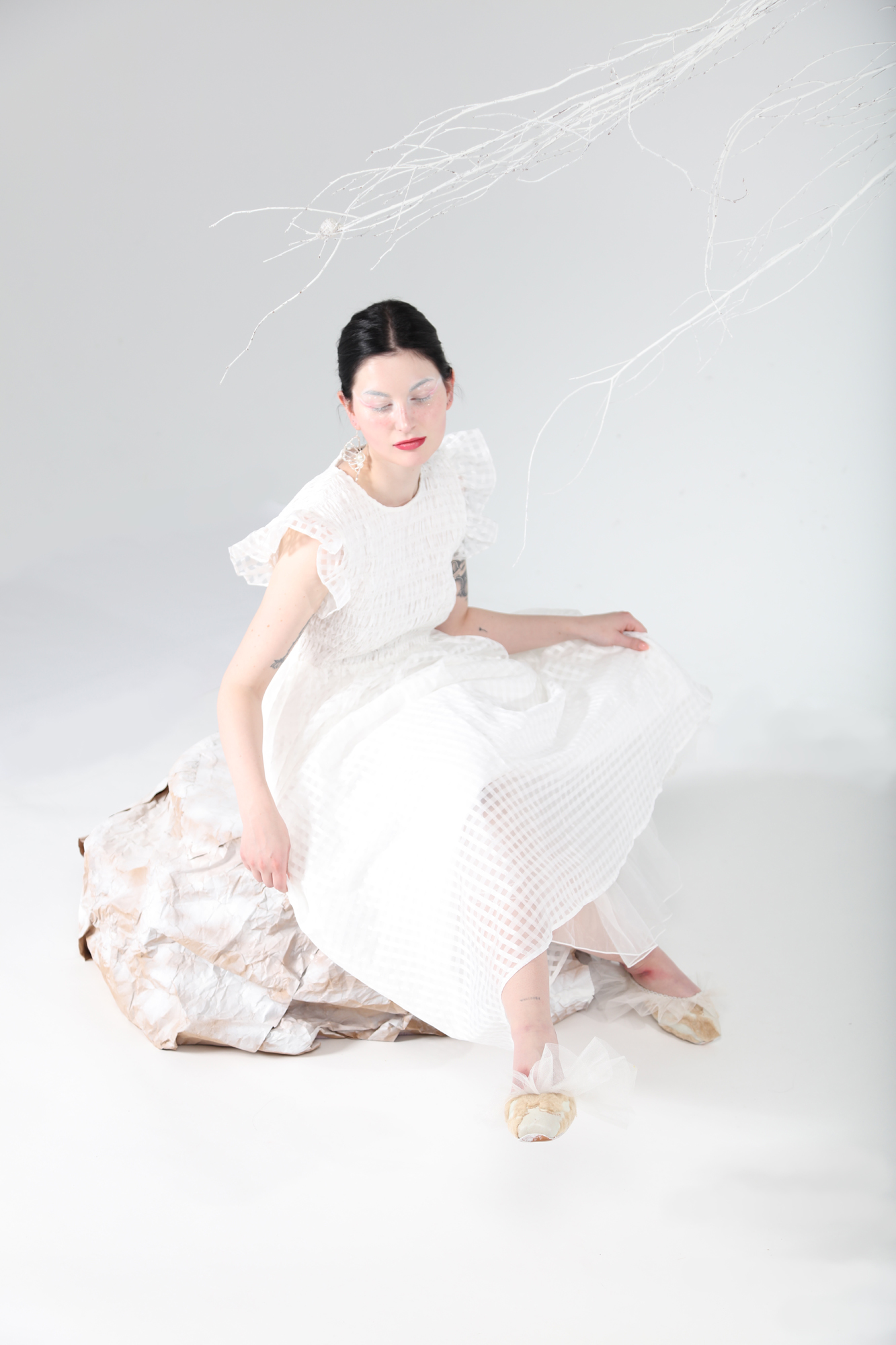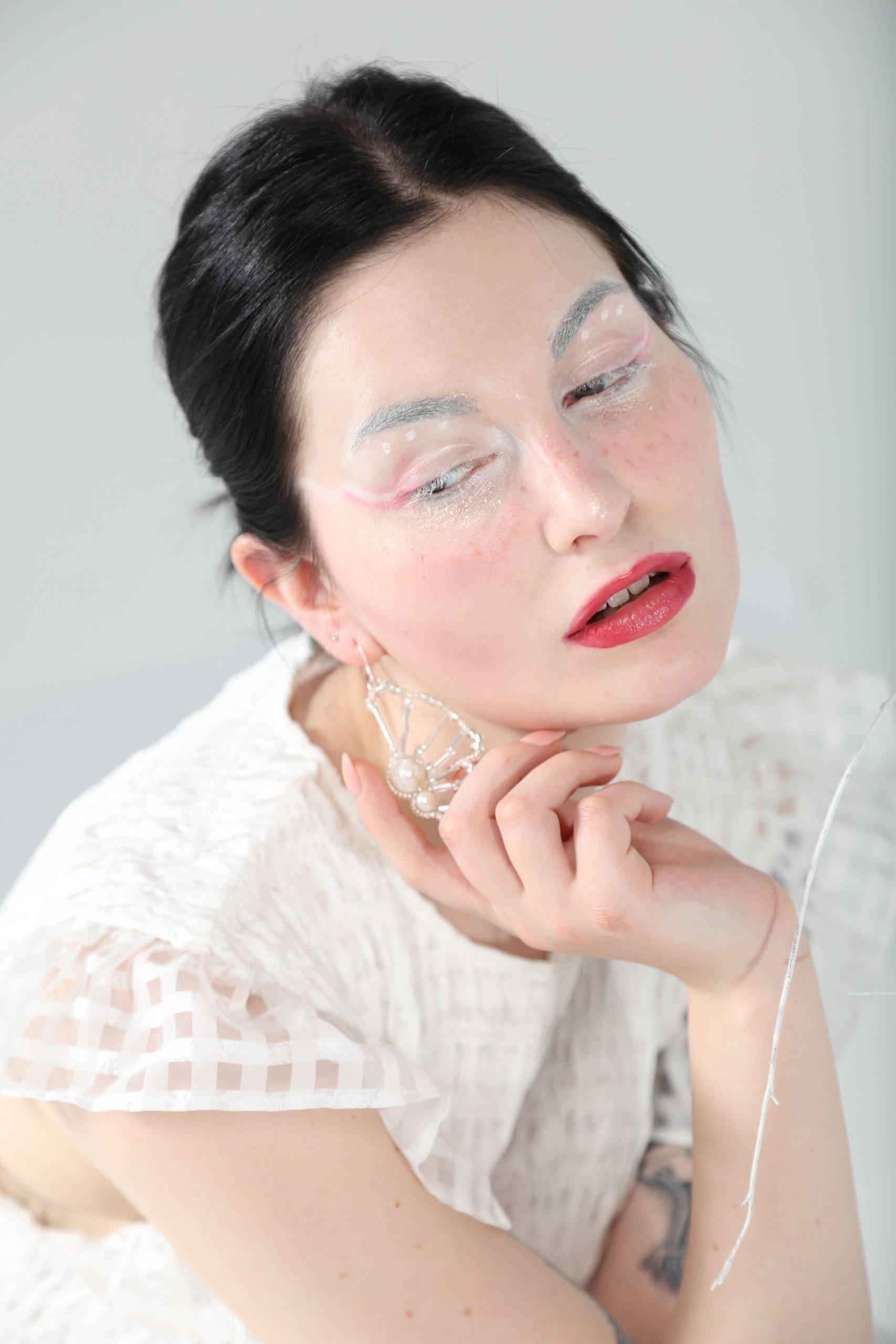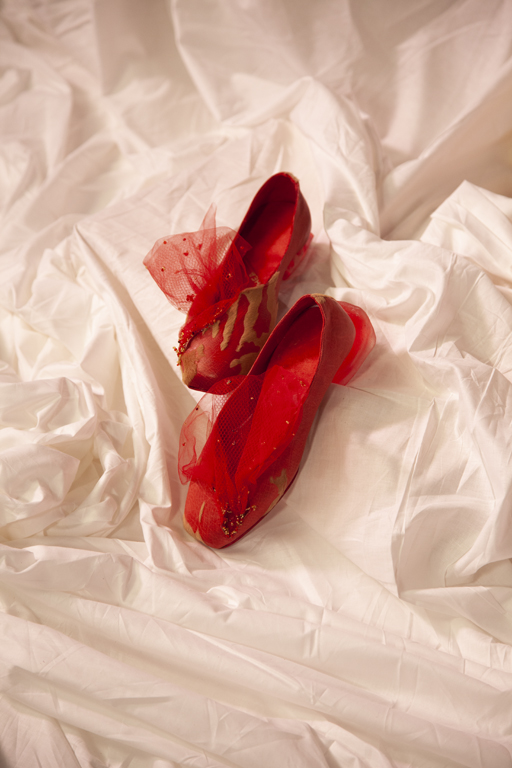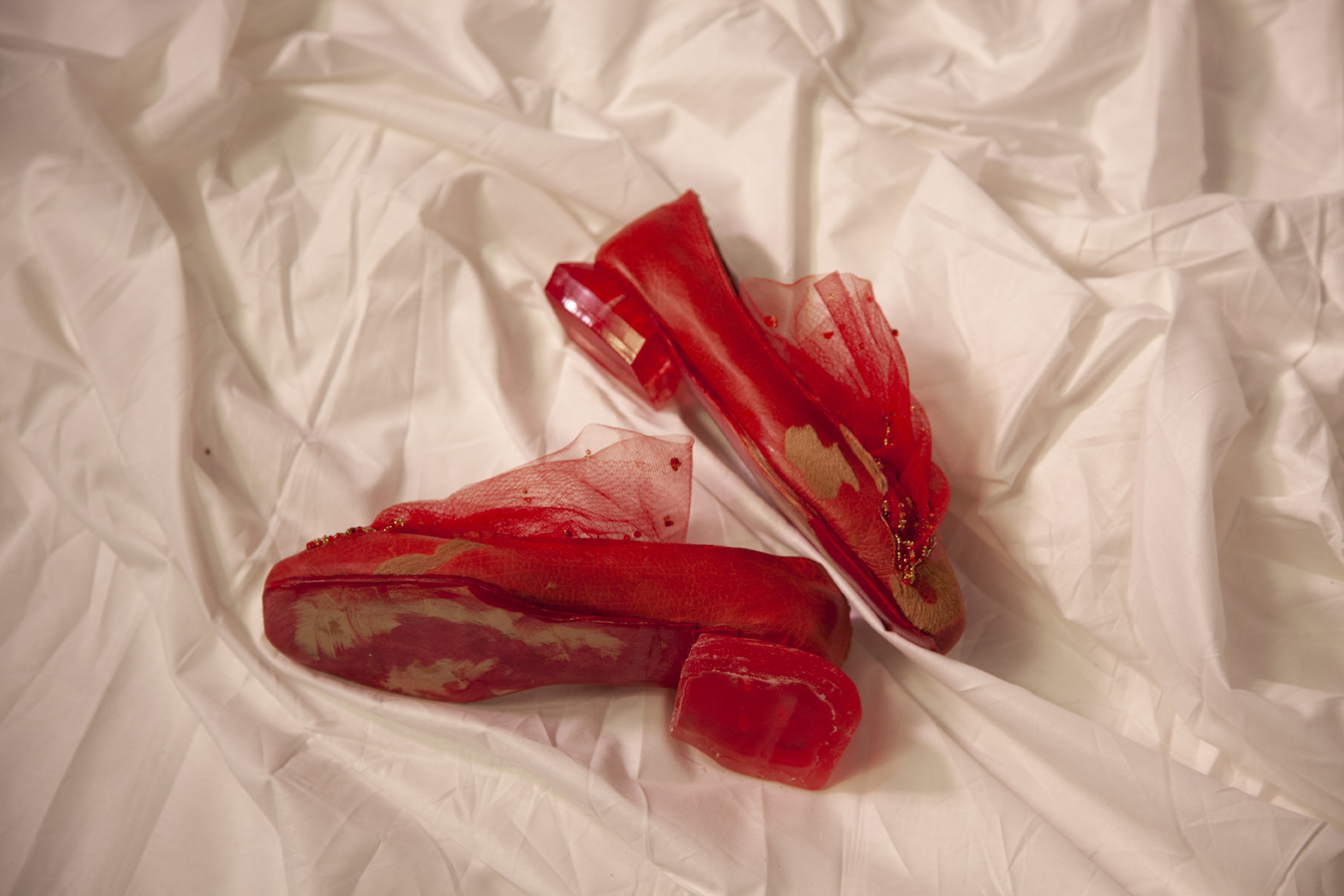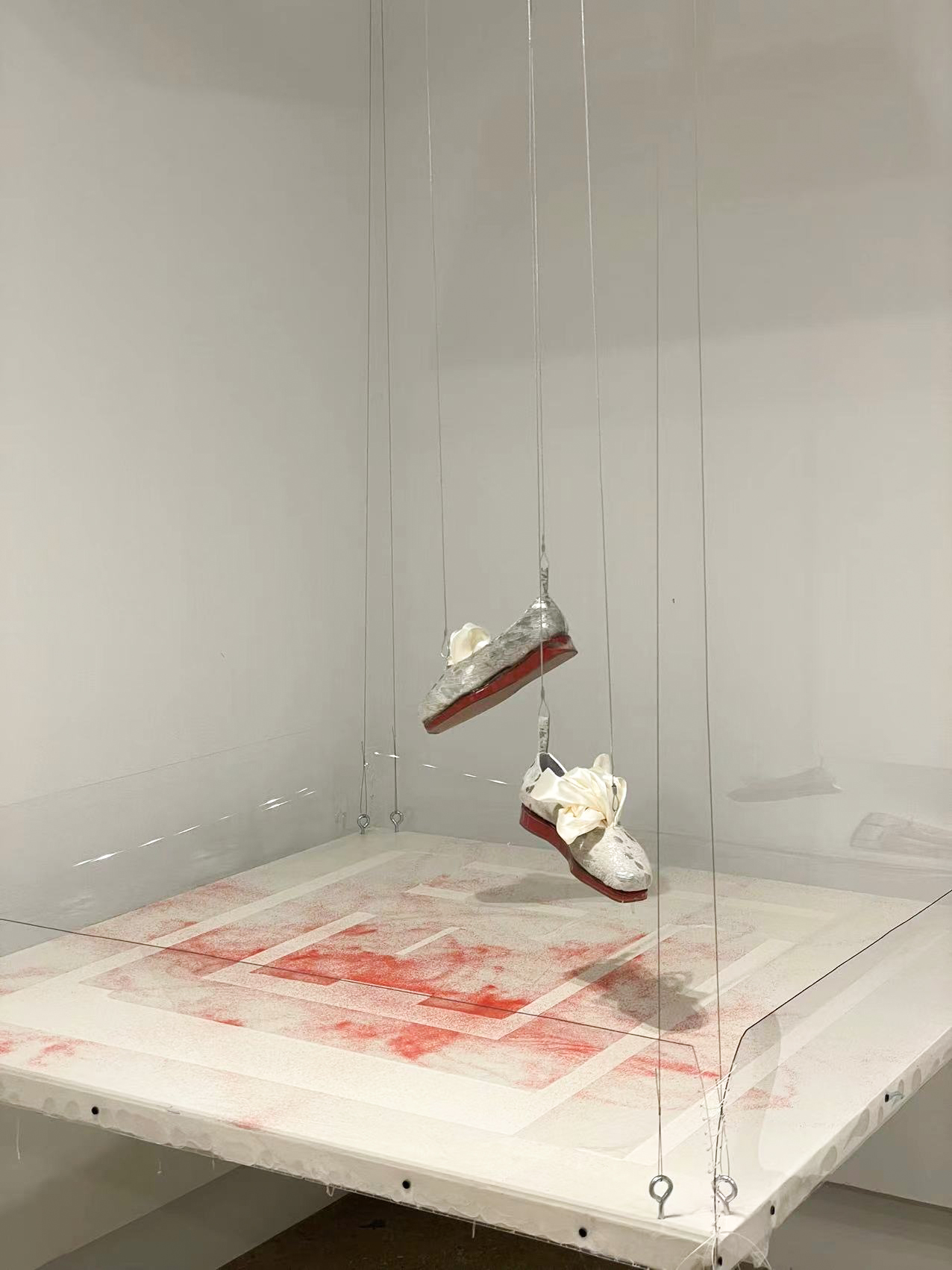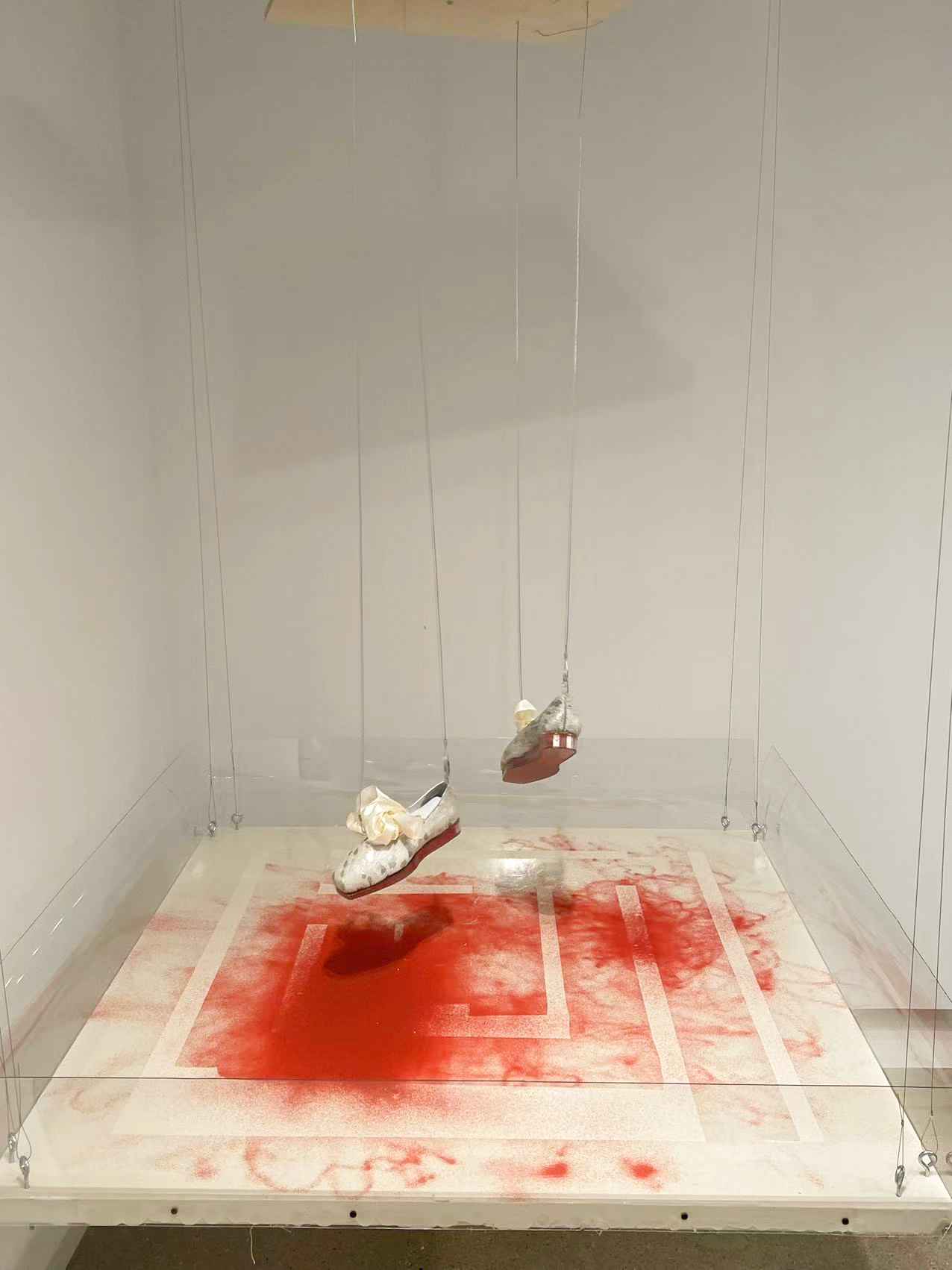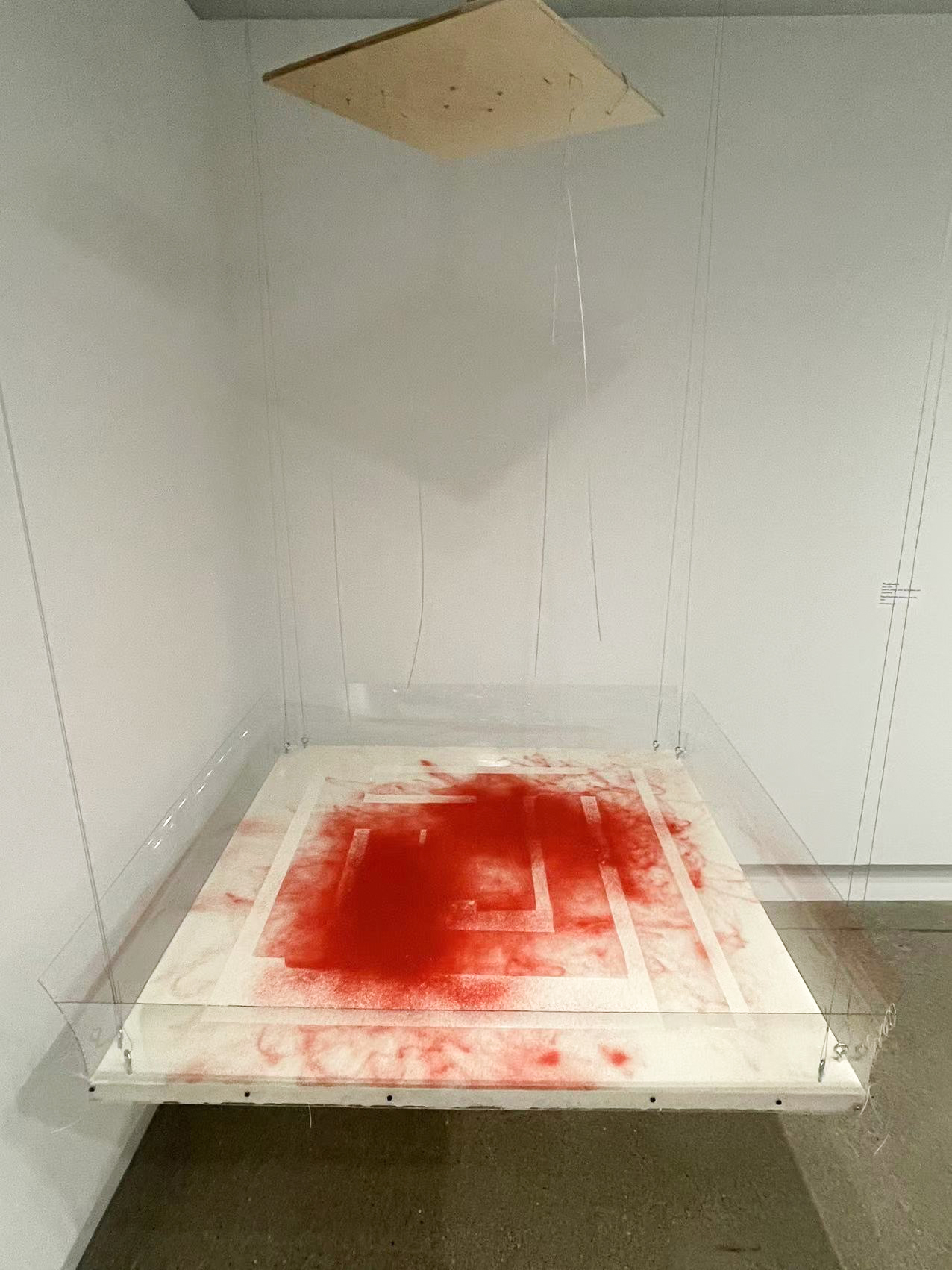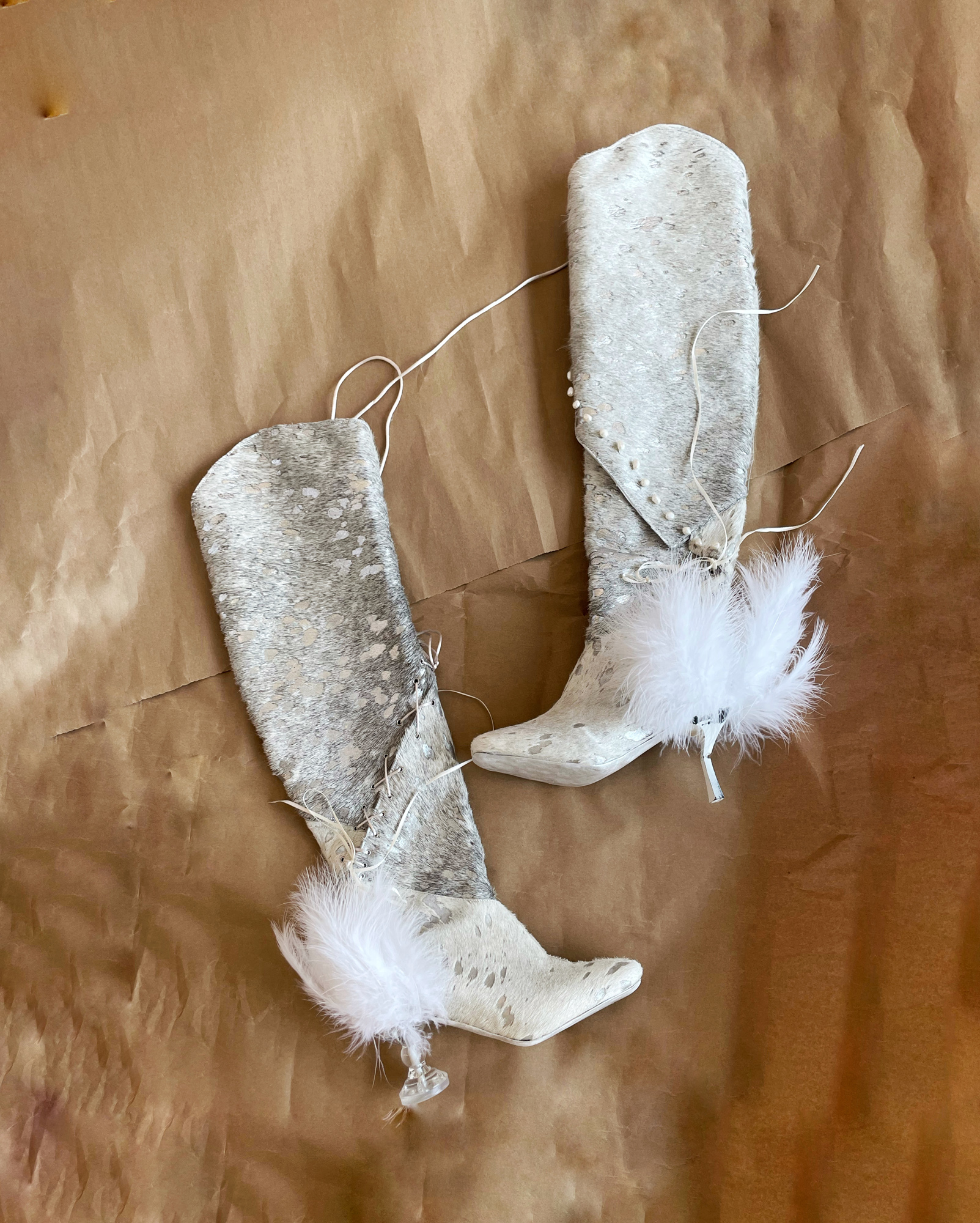Being a footwear designer, my work usually brings up the relation between the shape of the last and the history behind it. The ballet flat is my current focus. The development of the shape of ballet shoes into fashion ballet flats is quite recent. People’s appreciation for the elegance of ballet dance transformed into the shape of a ballet flat. We enjoy the gracefulness ballet flats bring to us when we put on the shoes. But we tend to forget that the grace of ballet comes from the hard work of the dancers’ practice and the violence behind it. Injuries and bruises are inevitable during the process. I hope through my design to evoke the appreciation of the efforts the dancers put in behind the stage and the sordid history behind ballet.
During my creation process, I often think about the history of the last I’m using, and the relationship between the original purpose for the shoe and the modern development in the fashion industry.
The collection started the moment I received my ballet flat last. When I first started designing and making my first pair of shoes with this last, I didn’t start thinking about why the last would be this shape. I only remember the joy of learning ballet when I was young and received my shoes. Until one day I stumbled across this painting of L’étoile by Edgar Degas. In the front of the painting is a girl dancing elegantly in a ballet. Hidden behind the scenes are other ballet dancers who are waiting to debut, but there is a man in a black suit. This man is very out of tune with the scene in the dance rehearsal room, and his painting style is very different from everyone else around. This made me very curious about the social atmosphere at the time. I started my research from this painting.
It is unclear who Edgar Degas used as a model for his 1879 painting L’Etoile, which depicts that tense moment. But most likely she is also a prostitute. Unfortunately, sex work was a part of the lives of 19th-century ballet dancers and their most important source of income. “The ballet is…what the bar-room is to many a large hotel,” wrote Scribner’s Magazine in 1892, “the chief paying factor, the one from which the surplus profits come.” Men subscribed to the opera not for the music, but for the beautiful ballerinas who danced twice per show—and, behind the scenes, they bought sexual favors from the women they ogled on stage.
The Paris Opera Ballet has additional space behind the stage that can be used as a private passage for performers. Those who take advantage of the space are those who have donated heavily to the program and have repeatedly paid for the dancers’ lifestyle in exchange for sexual favors. Often from the lower classes, these aspiring young women were not paid enough to fully support themselves or afford the necessary dance gear in the 19th century, often forcing them to accept advances from strangers. If they deny or annoy these people, customers may force the company to fire them. If these women receive an advance payment, not only will they have a sustainable income, but they will have a better chance of success through sponsor promotion or offering private lessons. The black man behind the scenes may have been the patron of this depicted single dancer or the reason for her success. Unfortunately, due to social stigma, even if she did not accept a patron, she would still be treated as a prostitute by others.
In modern society, ballet has long been disconnected from sex trafficking and sexual exploitation. The dancers have also changed from being “prostitutes” to being noble and elegant, synonymous with purity. Their dances are full of youthful beauty, showing a brand-new spiritual world and otherworldly.
The ballet flat is the product of the collision of dance and fashion. In modern society, ballet has long been disconnected from sex trafficking and sexual exploitation. The dancers have also changed from being “prostitutes” to being noble and elegant, synonymous with purity. Their dances are full of youthful beauty, showing a brand-new spiritual world and otherworldly. It is precise because of such a
subversive transformation of ballet in human history. Such shoes have become the representatives of elegance in the fashion world. Now we either go to a ballet or go for a pair of ballet flats as part of our everyday wear. None of us associate such a beautiful thing with violence. Their lives in the 19th century were filled with the psychological violence of sexual exploitation. The journey from an amateur student to a professional dancer who can perform on stage is also fraught with violence. In order to dance beautifully and elegantly, dancers have to keep pressing their legs since they were young and practice the lower back and split to make their bodies flexible. These are not worth mentioning in the face of the pressure of pointe shoes on the foot. All kinds of bruises and injuries are just commonplace on the road to success.
Ballet shoes are often made of natural materials such as satin, canvas, or leather. In my designs, I explore the combination of traditional and new materials. I choose acid-washed leather as the main material of the upper, with a soft leather (either calfskin or lambskin) for the liner of the shoes. I fell in love with the unique texture that acid-washed leather brings when I first found it. These skins undergo an acid- washing process that removes some of the hair, leaving them with irregular organic patterns. These specially treated leathers that have fallen off their fur and exposed their skin have many similarities with the dance shoes worn by dancers. During the practice of dancing shoes, after constant friction, the fabric of the toes will be worn away and exposed below. And these worn pointe shoes also allude to the hard work and inescapable violence a dancer goes through before taking the stage. In terms of design details, I took a lot of elements from the costumes of the ballet dancers: the straps of the bodice, the tutu skirt, the beading, and so on.
For the material of the sole and heel, I choose a combination of old and new materials; depending on the design style and function, I will choose to use 3d modeling and then print it or use clay to shape and carve the desired effect and then use silicone to turn it over. Mold out and then restores with resin. There are often many small air bubbles in the process of mold overturning and restoration. After many attempts, I found that proper heating and dispensing can effectively reduce the generation of air bubbles.
After making several pairs of ballet flats, I started thinking about how to move the shoe display into the gallery. I want to show the audience the painful and violent side of these graceful dances through my installation. This installation is an extension of my shoe collection. I hope to show the hardships and struggles of the ballet dancers behind the stage to different audiences through different presentation methods. Wearing pointe shoes puts a lot of pressure on a dancer’s feet, especially the toes, and bruising is inevitable. The installation is mainly composed of three parts: a rotatable device suspended from the ceiling: a pair of ballet shoes with sand-filled soles, and a canvas at the height of the audience’s waist. This pair of point shoes hang from a turning device to mimic a dancer’s standing in a half-open position during a performance. During the exhibition, visitors are invited to push through their shoes. The sand will slowly flow out with constant pushing, creating unique patterns on the canvas. Although ballet is a kind of high art, it is only a part of people’s entertainment.
Dancers perform because there is an audience waiting to be entertained by them. In a sense the dancers are passive and the audience pushes them to dance like puppets.
At first, I wanted to inject red dye or ink on the specially made soles to tell the dancers’ visual effort but take into the gallery show. I ended up using fine red sand instead of the ink, an option that might stain the showroom. Regarding placement: I abandoned my original plan to place the canvas directly on the floor. A sheer baffle was added when the canvas was hung at waist height. This arrangement is a good way to avoid sand scattering on the ground during the interaction. At the same time, this height is similar to the height of the audience sitting in the first row of stands, which can better express the theme. After this, I’m starting to explore how to continue to express these ideas besides the shape of a ballerina flat, I’m trying to make sneakers and boots with ballet last, etc.
Being a footwear designer, my work usually brings up the relation between the shape of the last and the history behind it. The ballet flat is my current focus. The development of the shape of ballet shoes into fashion ballet flats is quite recent. People’s appreciation for the elegance of ballet dance transformed into the shape of a ballet flat. We enjoy the gracefulness ballet flats bring to us when we put on the shoes. But we tend to forget that the grace of ballet comes from the hard work of the dancers’ practice. and injuries and bruises are inevitable during the process. I hope through my design to evoke the appreciation of the efforts the dancers put in behind the stage.
Works Cited
Burlingame,, Edward Livermore, et al., editors. “ Paris Theatres and
Concerts.” Scribner’s Magazine, vol. 11, 1892.
Blakemore, Erin. “Sexual Exploitation Was the Norm for 19th Century Ballerinas.” History.com, A&E Television Networks, 5 Jan. 2018,
https://www.history.com/news/sexual-exploitation-was-the-norm-for-19th-century-ballerinas.
